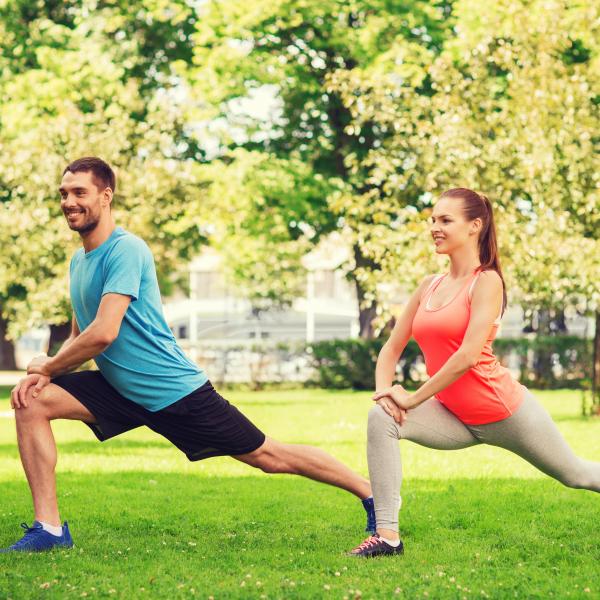
The activities of running, swimming, and to a lesser extent, cycling all require some amount of movement and control in all three dimensions. Despite this, many cross training programs don’t include exercises that involve all three dimensions. For instance, many running programs focus on the sagittal plane (squats, lunges, leg press, and calf raises) and neglect the transverse (side to side) and frontal (rotational) planes.
Most natural human movement is executed in all three dimensions. These three dimensions, or planes of movement, are sagittal, frontal, and transverse. The sagittal plane is forward and backwards movement such as the leg movement with walking. The frontal plane is sideways movement such as jumping jacks. The transverse plane is rotational movement such as rotating your hip or shoulder during a throwing motion.
With running the primary movement occurs in the sagittal plane but one needs to be able to stabilize in the frontal and transverse plane in order to be efficient, powerful, and sustainable. Many of the injuries seen with running are related to too much movement in the frontal or transverse plane. Over pronation, inward collapse of the knee, or an opposite side hip drop are all problems of control in either the frontal or transverse plane.
Biking has its own challenges with lower extremity movement in the sagittal plane but stability needing to come from the upper body by controlling twisting and side bending forces. Many injuries are related to poor fit or alignment of the bike components but many others are related to the mismatch in lower extremity force production and stability of the torso.
Swimming (freestyle) requires sagittal plane lower extremity movement, transverse plane spinal movement/stability, and tri-planar movement of the upper extremities. Many repetitive strain injuries are related to poor stability or control of movement in the lower back and scapula area or a lack of mobility of the upper back or shoulder.
Improving strength and power output through resistance training can improve performance in all of these sports but neglecting the frontal and transverse plane is a common mistake that can actually increase ones risk of injury. Below are several options for developing strength and control in the frontal and transverse planes.
FRONTAL PLAN FOCUS
Lateral Lunge – Step towards the right sitting back with your hip to drop into a lunge position. Ensure that your hip does not advance laterally past your knee. Power through your right leg to push yourself back to the start position in one motion and repeat the opposite direction.

Lateral Mini-Band Steps – With a resistance band around your ankles perform side steps while maintaining an athletic stance (hips back and body inclined forward). Try to pull your knees apart from each other so your knees are never closer together than your feet.

Skater Hops – While standing on one leg, in an athletic position, jump sideways from one leg to the other. Pause on the opposite foot and stabilize yourself before hoping back to the other side.

Side Bridge – Support yourself on your outer knee and elbow. Raise your hips off the floor keeping yourself in a tall posture through your hips and spine. To advance the exercise you can lift your top leg slightly up and back.

TRANSVERSE PLANE FOCUS
Single Leg Romanian Dead-Lift – Stand on one leg with a slight bend in your knee. Keep your good posture of your spine and your opposite leg straight while hinging forward like a “dipping bird.” Try to keep your pelvis square throughout the exercise so that your hips are level when in the hinged position. Return to the starting position and repeat, trying to keep your opposite foot off the ground the entire time.

Palloff Press – Hold a resistance band or weight stack cable at your chest and stand in an athletic position. Without changing your body position reach your hands forward and resist the cable so that your body doesn’t rotate.

½ Kneeling Diagonal Chop or Lift – Use a resistance band or weight stack cable anchored low for the lift or high for the chop exercise. Pull the handle diagonally across your body without letting your posture or body position change. For the chop the outside knee should be down and for the lift the inside knee should be down.




Single Leg Alternating Bound in Place – Start by standing on one leg with the opposite leg positioned behind your body. Bring the rear leg forward (shown in second picture) and jump off the ground, landing on the opposite foot with the other leg positioned behind you.


Each of these exercises can be progressed or regressed to accommodate your current level of fitness and control. Including two sets of each exercise twice a week should provide a training effect to improve performance and reduce risk of repetitive strain injury.
